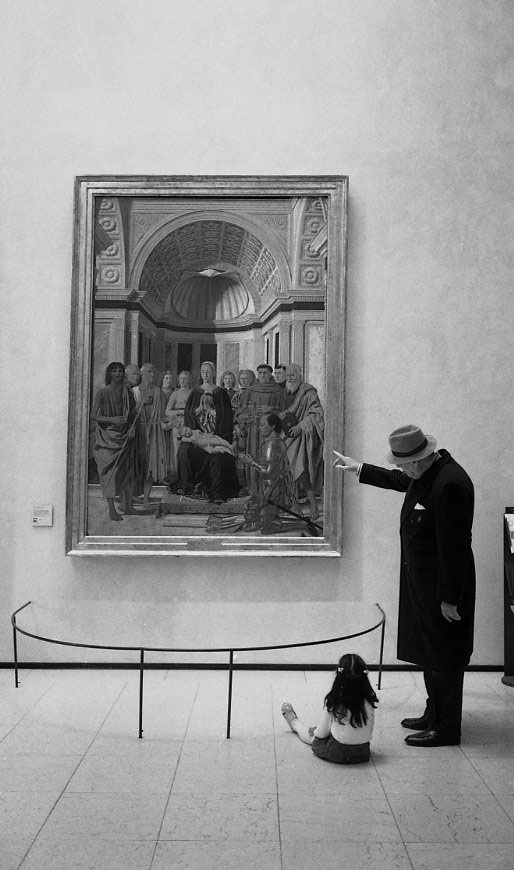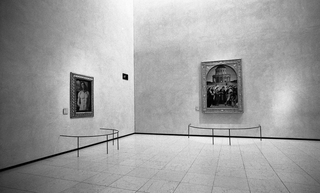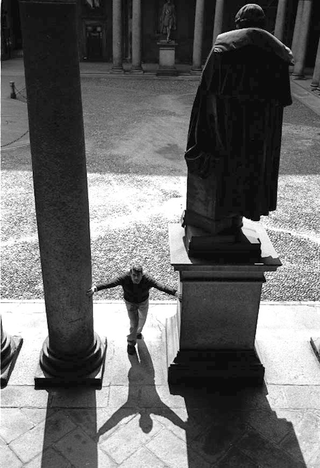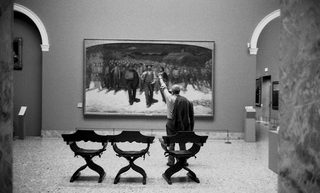The Brera Academy of Fine Arts was founded in 1776 at the behest of Empress Maria Theresa of Austria, with the intention of organizing the teaching of fine arts in a systematic and rigorous manner.
Located in the heart of Milan, the Academy is housed in the 17th-century Palazzo di Bera, a building formerly owned by the public and once used as a convent.
In the early 19th century, as part of a reform of art teaching, the main subjects of study were established: Architecture, Painting, Sculpture, Ornamentation, Engraving, Perspective, Artistic Anatomy and Elements of Figure.
Over time, the Academy established itself as a place for the promotion of exhibitions, events and research, becoming a point of reference for contemporary artistic debate.
Among its teachers and students are prominent figures, including Francesco Hayez, Giuseppe Pellizza da Volpedo, Adolfo Wildt - who was the teacher of Lucio Fontana and Fausto Melotti, among others - as well as Francesco Messina, Marino Marini and, in more recent times, artists such as Luciano Fabro and Alberto Garutti.
The Pinacoteca di Brera is one of Italy's most important museums, famous for its extraordinary collection of Italian paintings. Established in 1809 by Napoleon, it is housed in the Brera Palace, which houses the Academy of Fine Arts of the same name.
The museum was initially created with the intention of offering students exemplary works by great masters; in fact, a first nucleus of artworks dates back as early as 1776 conceived as a didactic support for the Academy.
Its transformation of the Pinacoteca into a full-fledged museum occurred during the establishment of Milan (1805-1814) as the capital of the Kingdom of Italy. In those years its collection was enriched with numerous paintings, mostly of religious subjects and of large format, from churches and convents suppressed following the Napoleonic reorganization of religious orders.
Among the best-known masterpieces are Andrea Mantegna's Cristo morto nel sepolcro e tre dolenti, Piero della Francesca's Pala di Montefeltro, Raphael Sanzio's Lo sposalizio della Vergine, Caravaggio's Cena in Emmaus, and Francesco Hayez's Il bacio.

The Brera Academy of Fine Arts was founded in 1776 at the behest of Empress Maria Theresa of Austria, with the intention of organizing the teaching of fine arts in a systematic and rigorous manner.
Located in the heart of Milan, the Academy is housed in the 17th-century Palazzo di Bera, a building formerly owned by the public and once used as a convent.
In the early 19th century, as part of a reform of art teaching, the main subjects of study were established: Architecture, Painting, Sculpture, Ornamentation, Engraving, Perspective, Artistic Anatomy and Elements of Figure.
Over time, the Academy established itself as a place for the promotion of exhibitions, events and research, becoming a point of reference for contemporary artistic debate.
Among its teachers and students are prominent figures, including Francesco Hayez, Giuseppe Pellizza da Volpedo, Adolfo Wildt - who was the teacher of Lucio Fontana and Fausto Melotti, among others - as well as Francesco Messina, Marino Marini and, in more recent times, artists such as Luciano Fabro and Alberto Garutti.
The Pinacoteca di Brera is one of Italy's most important museums, famous for its extraordinary collection of Italian paintings. Established in 1809 by Napoleon, it is housed in the Brera Palace, which houses the Academy of Fine Arts of the same name.
The museum was initially created with the intention of offering students exemplary works by great masters; in fact, a first nucleus of artworks dates back as early as 1776 conceived as a didactic support for the Academy.
Its transformation of the Pinacoteca into a full-fledged museum occurred during the establishment of Milan (1805-1814) as the capital of the Kingdom of Italy. In those years its collection was enriched with numerous paintings, mostly of religious subjects and of large format, from churches and convents suppressed following the Napoleonic reorganization of religious orders.
Among the best-known masterpieces are Andrea Mantegna's Cristo morto nel sepolcro e tre dolenti, Piero della Francesca's Pala di Montefeltro, Raphael Sanzio's Lo sposalizio della Vergine, Caravaggio's Cena in Emmaus, and Francesco Hayez's Il bacio.




Social
Contatti
archivio@carloorsi.com